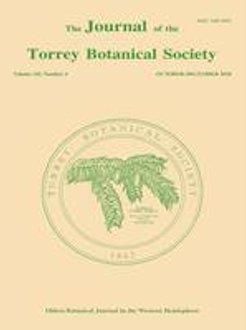Invasive plants often benefit from ecological disturbances that allow them to gain a foothold and to achieve competitive superiority. One form of anthropogenic disturbance in coastal ecosystems is the deposition of sediments dredged for navigation and other purposes. Examples can be found in New York's Hudson River Estuary, now colonized by many terrestrial and aquatic invasive plant species, whose success may be related in part to a variety of anthropogenic disturbances. We investigated spatial patterns of a widespread colonization by Celastrus orbiculatus Thunb., Oriental (or Asiatic) bittersweet, across the 425-ha Schodack Island State Park, Rensselaer and Columbia Counties, NY. Populations were mapped and surveyed on a fixed grid to determine general distribution patterns. Of 146 sites examined, 59% contained populations of the target species, with mean estimated liana age of 9.3 yr, indicating a relatively recent population expansion. Stem densities were 88% higher in sites with dredged material substrate, which was found to be coarser, lower in organic matter, and lower in major nutrients. High-density populations of C. orbiculatus (> 50% cane cover) were found only on sites with dredge spoil substrate. Experimental tests were performed at 25 locations (five different site types) based on substrate properties (dredged substrate or native forested floodplain) and local C. orbiculatus densities (absent, < 10%, or > 50%). Ten greenhouse-grown seedlings and 100 wild-harvested seeds were planted at each site and then tracked for their survival, growth, and evidence of arbuscular mycorrhizal (AM) inoculation. Transplants survived and grew at similar rates among the site types, but mean field germination, although low overall (< 5%), was three times higher in the dredge spoil substrate. All recovered transplants were inoculated in the field by AM, with somewhat higher within-plant frequencies (99.0% vs. 80.0%) among fine root sections from dredge spoil substrate. No overall differences in inoculation were found among sites with different C. orbiculatus densities, suggesting generalist fungal mutualisms. Most sites with dredge spoil deposition lie above tidal flood zones and thus are out of contact with natural disturbance dynamics, which may help explain the observed differences between substrate types. Given the widespread distribution and high dispersal potential of this plant species, targeted management will be needed to protect ecologically sensitive areas of the park, and our work suggests that management should include efforts to restore and enhance contact with natural tidal dynamics.
How to translate text using browser tools
1 October 2018
Dredge spoil deposits and distributions of invasive Celastrus orbiculatus Thunb. (Celastraceae, Oriental bittersweet) in a riparian ecosystem
Shabana Hoosein,
George R. Robinson
ACCESS THE FULL ARTICLE
Celastrus orbiculatus
dredge spoil deposition
Hudson River Estuary
phytometer experiment





